An Improved Large-Scale Stress-Controlled Apparatus for Long-Term Seepage Study of Coarse-Grained Cohesive Soils
Abstract
:1. Introduction
2. Improved Test Apparatus
2.1. Briefing of Existing Apparatus
2.2. Novel Water Provision System
3. Materials and Methods
4. Results and Discussion
4.1. Repeatability Tests
4.2. Triaxial Seepage Tests Involving Time Effect
5. Conclusions
Author Contributions
Funding
Institutional Review Board Statement
Informed Consent Statement
Data Availability Statement
Conflicts of Interest
References
- Elkholy, M.; Sharif, Y.A.; Chaudhry, M.H.; Imran, J. Effect of soil composition on piping erosion of earthen levees. J. Hydraul. Res. 2015, 53, 478–487. [Google Scholar] [CrossRef]
- Israr, J.; Indraratna, B. Study of Critical Hydraulic Gradients for Seepage-Induced Failures in Granular Soils. J. Geotech. Geoenviron. Eng. 2019, 145, 04019025. [Google Scholar] [CrossRef]
- Caldeira, L. Internal Erosion in Dams: Studies and Rehabilitation. Int. J. Civ. Eng. 2019, 17, 457–471. [Google Scholar] [CrossRef]
- Foster, M.; Fell, R.; Spannagle, M. The statistics of embankment dam failures and accidents. Can. Geotech. J. 2000, 37, 1000–1024. [Google Scholar] [CrossRef]
- Ma, H.; Chi, F. Major Technologies for Safe Construction of High Earth-Rockfill Dams. Engineering 2016, 2, 498–509. [Google Scholar] [CrossRef]
- Le, V.T.; Marot, D.; Rochim, A.; Bendahmane, F.; Nguyen, H.H. Suffusion susceptibility investigation by energy-based method and statistical analysis. Can. Geotech. J. 2018, 55, 57–68. [Google Scholar] [CrossRef]
- Liang, Y.; Yeh, T.-C.J.; Zha, Y.; Wang, J.; Liu, M.; Hao, Y. Onset of suffusion in gap-graded soils under upward seepage. Soils Found. 2017, 57, 849–860. [Google Scholar] [CrossRef]
- Luo, Y.; Nie, M.; Xiao, M. Flume-scale experiments on suffusion at bottom of cutoff wall in sandy gravel alluvium. Can. Geotech. J. 2017, 54, 1716–1727. [Google Scholar] [CrossRef] [Green Version]
- Chang, D.S.; Zhang, L. A stress-controlled erosion apparatus for studying internal erosion in soils. Geotech. Test. J. 2011, 34. [Google Scholar] [CrossRef]
- Luo, Y.L.; Wu, Q.; Zhan, M.L.; Sheng, J.C.; Wang, Y. Hydro-mechanical coupling experiments on suffusion in sandy gravel foundations containing a partially penetrating cut-off wall. Nat. Hazards 2013, 67, 659–674. [Google Scholar] [CrossRef]
- Richards, K. True Triaxial Piping Test Apparatus for Evaluation of Piping Potential in Earth Structures. Geotech. Test. J. 2010, 33, 83–95. [Google Scholar] [CrossRef]
- Chen, C.; Chen, S.; Mei, S.; Tang, Y.; Li, Y. A Large-Scale True Triaxial Seepage Apparatus for Evaluating Impact under High Stress State and High Hydraulic Heads. Geotech. Test. J. 2021, 44, 20200070. [Google Scholar] [CrossRef]
- Zou, Y.H.; Chen, Q.; He, C.R. A new large-scale plane-strain permeameter for gravelly clay soil under stresses. KSCE J. Civ. Eng. 2013, 17, 681–690. [Google Scholar] [CrossRef]
- Wang, Y.; Li, X.; Zheng, B.; Zhang, Y.X.; Li, G.F.; Wu, Y.F. Experimental study on the non-Darcy flow characteristics of soil–rock mixture. Environ. Earth Sci. 2016, 75, 756. [Google Scholar] [CrossRef]
- Oda, Y.; Mitachi, T. Stress Relaxation Characteristics of Saturated Clays. Soils Found. 1988, 28, 69–80. [Google Scholar] [CrossRef]
- Ren, X.; Yu, Q.; Zhang, G.; Yue, P.; Liu, E.; Zhang, Z.; You, Y. Effects of freezing-thawing on the engineering performance of core wall soil materials of a dam in the process of construction. J. Mt. Sci. 2020, 17, 2840–2852. [Google Scholar] [CrossRef]
- Tang, P.; Puri, V.M. An Innovative Device for Quantification of Percolation and Sieving Segregation Patterns–Single Component and Multiple Size Fractions. Part. Sci. Technol. 2005, 23, 335–350. [Google Scholar] [CrossRef]
- Shelley, T.L.; Daniel, D.E. Effect of Gravel on Hydraulic Conductivity of Compacted Soil Liners. J. Geotech. Eng. 1993, 119, 54–68. [Google Scholar] [CrossRef]
- Liang, Y.; Yeh, T.-C.J.; Wang, J.; Liu, M.; Zha, Y.; Hao, Y. Onset of suffusion in upward seepage under isotropic and anisotropic stress conditions. Eur. J. Environ. Civ. Eng. 2019, 23, 1520–1534. [Google Scholar] [CrossRef]
- Shafiee, A. Permeability of compacted granule–clay mixtures. Eng. Geol. 2008, 97, 199–208. [Google Scholar] [CrossRef]
- Wang, Y.; Li, X.; Zheng, B.; Ma, C.F. An Experimental Investigation of the Flow–Stress Coupling Characteristics of Soil–Rock Mixture Under Compression. Transp. Porous Media 2016, 112, 429–450. [Google Scholar] [CrossRef]
- Lv, Y.; Li, F.; Liu, Y.; Fan, P.; Wang, M. Comparative study of coral sand and silica sand in creep under general stress states. Can. Geotech. J. 2017, 54, 1601–1611. [Google Scholar] [CrossRef]
- Wang, M.; Xu, X.; Li, J.; Shen, F.; Li, Y. An experiment study on stress relaxation of unsaturated lime-treated expansive clay. Environ. Earth Sci. 2017, 76, 241. [Google Scholar] [CrossRef]
- Murayama, S.; Shibata, T. Flow and Stress Relaxation of Clays. In Rheology and Soil Mechanics/Rhéologie et Mécanique des Sols; Springer: Berlin/Heidelberg, Germany, 1966; pp. 99–129. ISBN 978-3-642-46049-4. [Google Scholar]
- Chang, D.S.; Zhang, L.M. Extended internal stability criteria for soils under seepage. Soils Found. 2013, 53, 569–583. [Google Scholar] [CrossRef] [Green Version]
- Dodaro, G.; Tafarojnoruz, A.; Sciortino, G.; Adduce, C.; Calomino, F.; Gaudio, R. Modified Einstein Sediment Transport Method to Simulate the Local Scour Evolution Downstream of a Rigid Bed. J. Hydraul. Eng. 2016, 142, 04016041. [Google Scholar] [CrossRef]

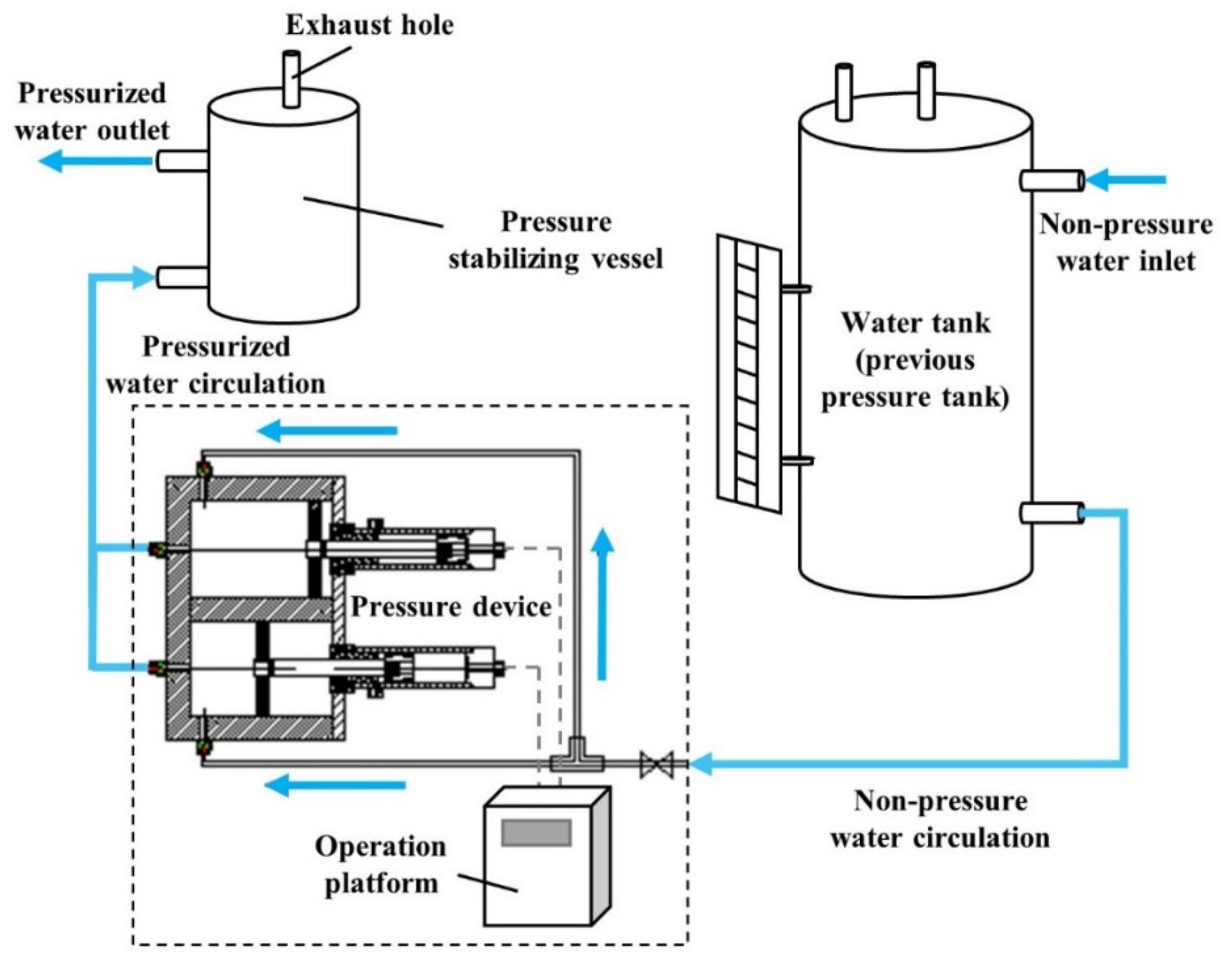
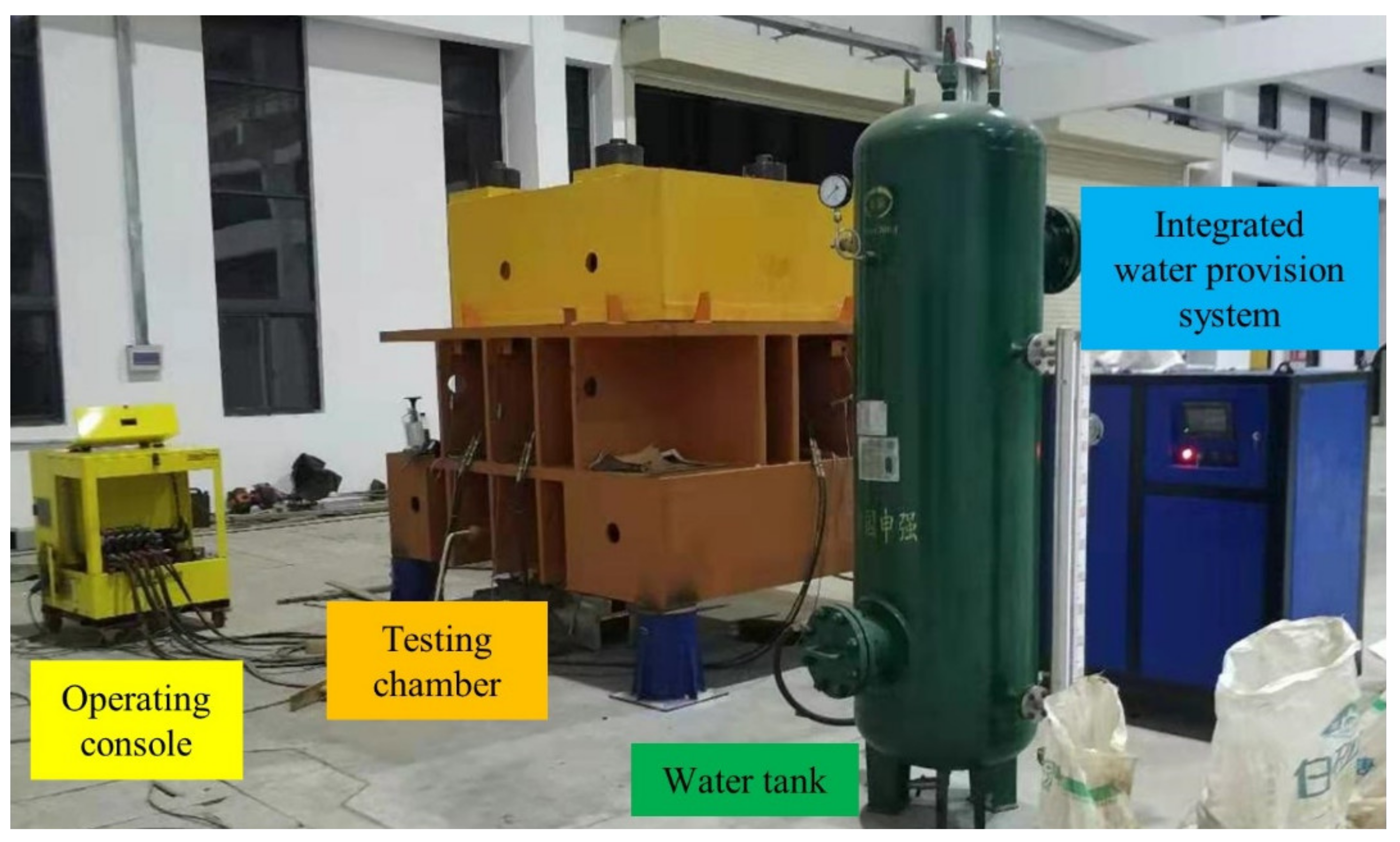
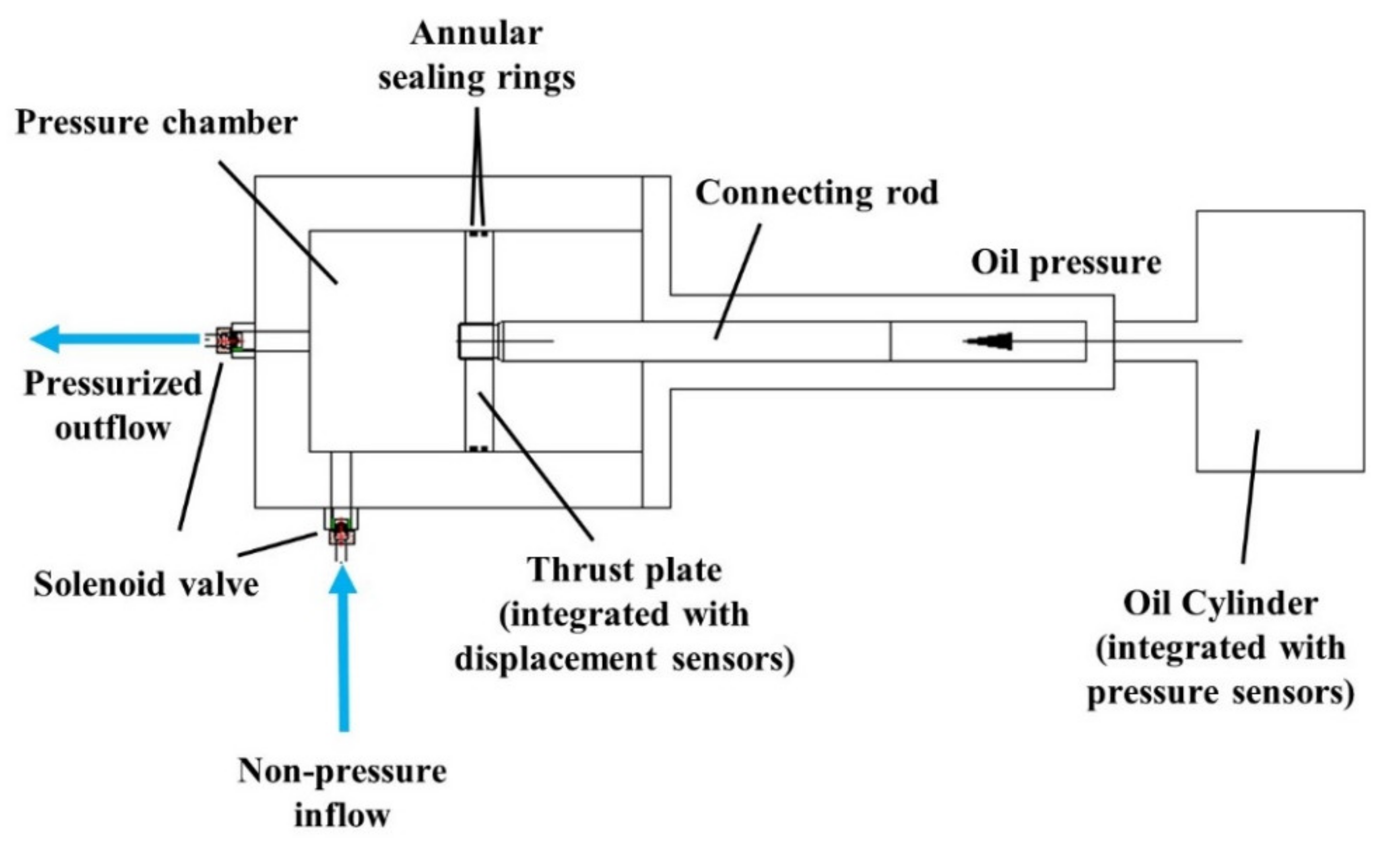
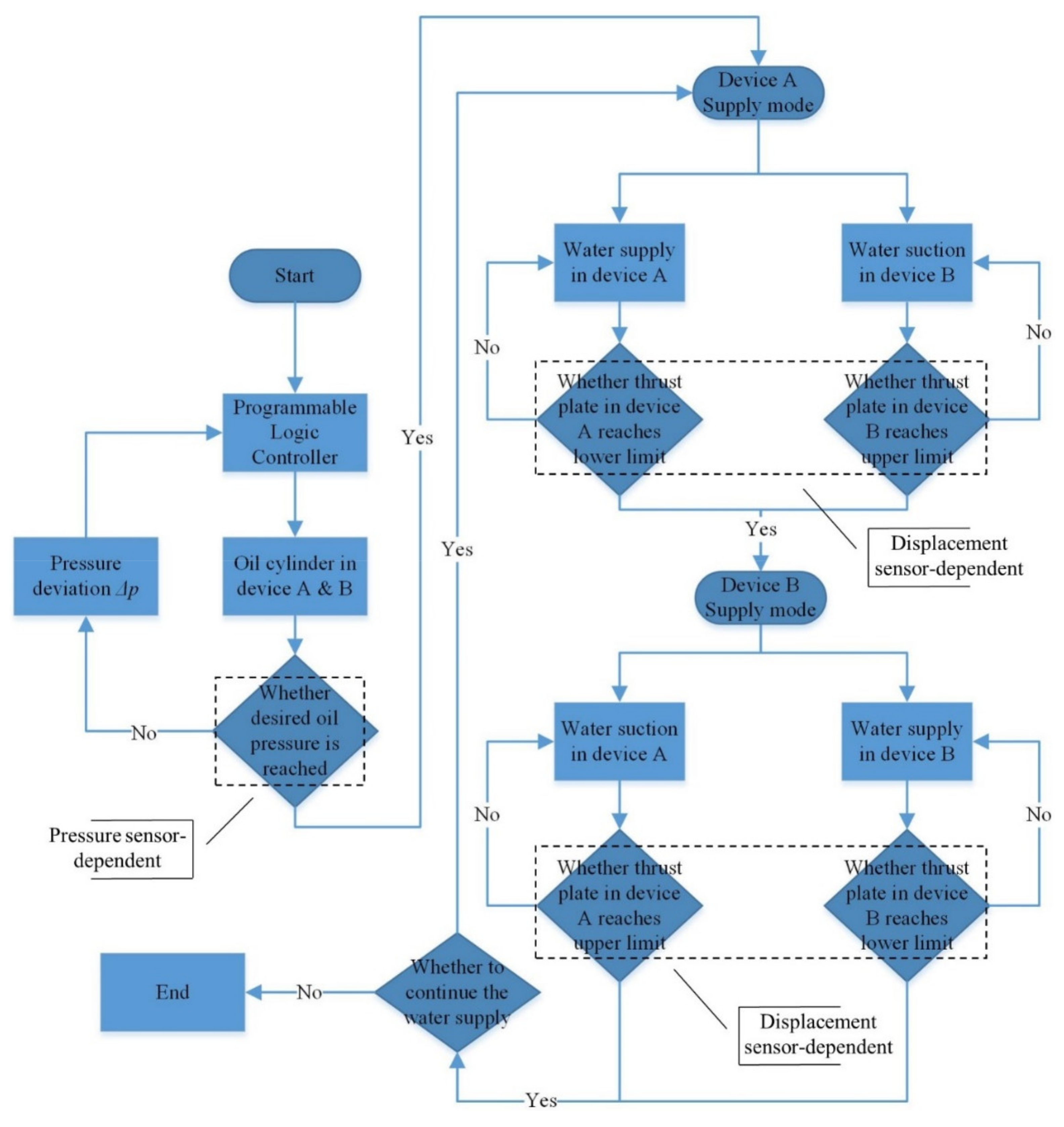
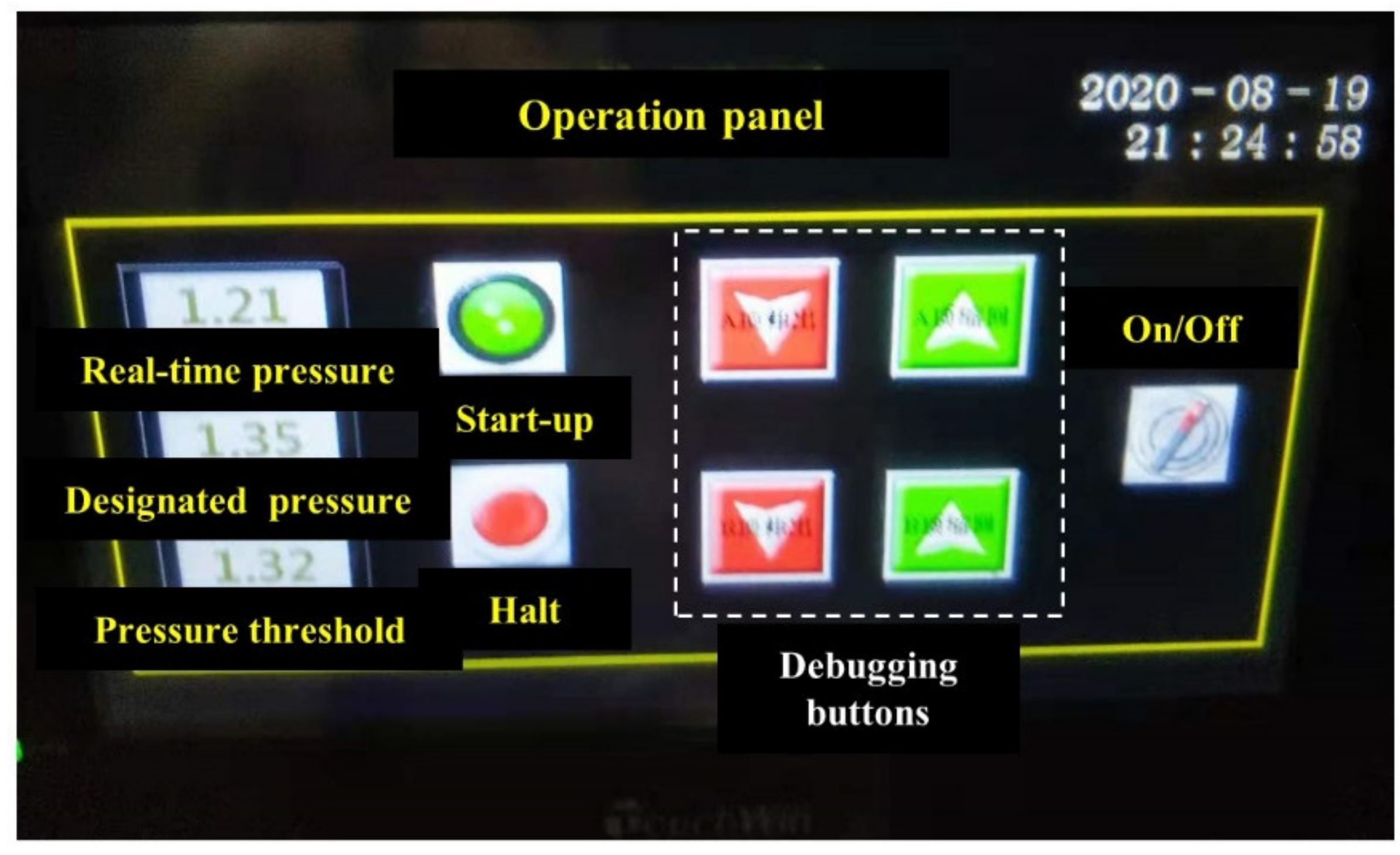
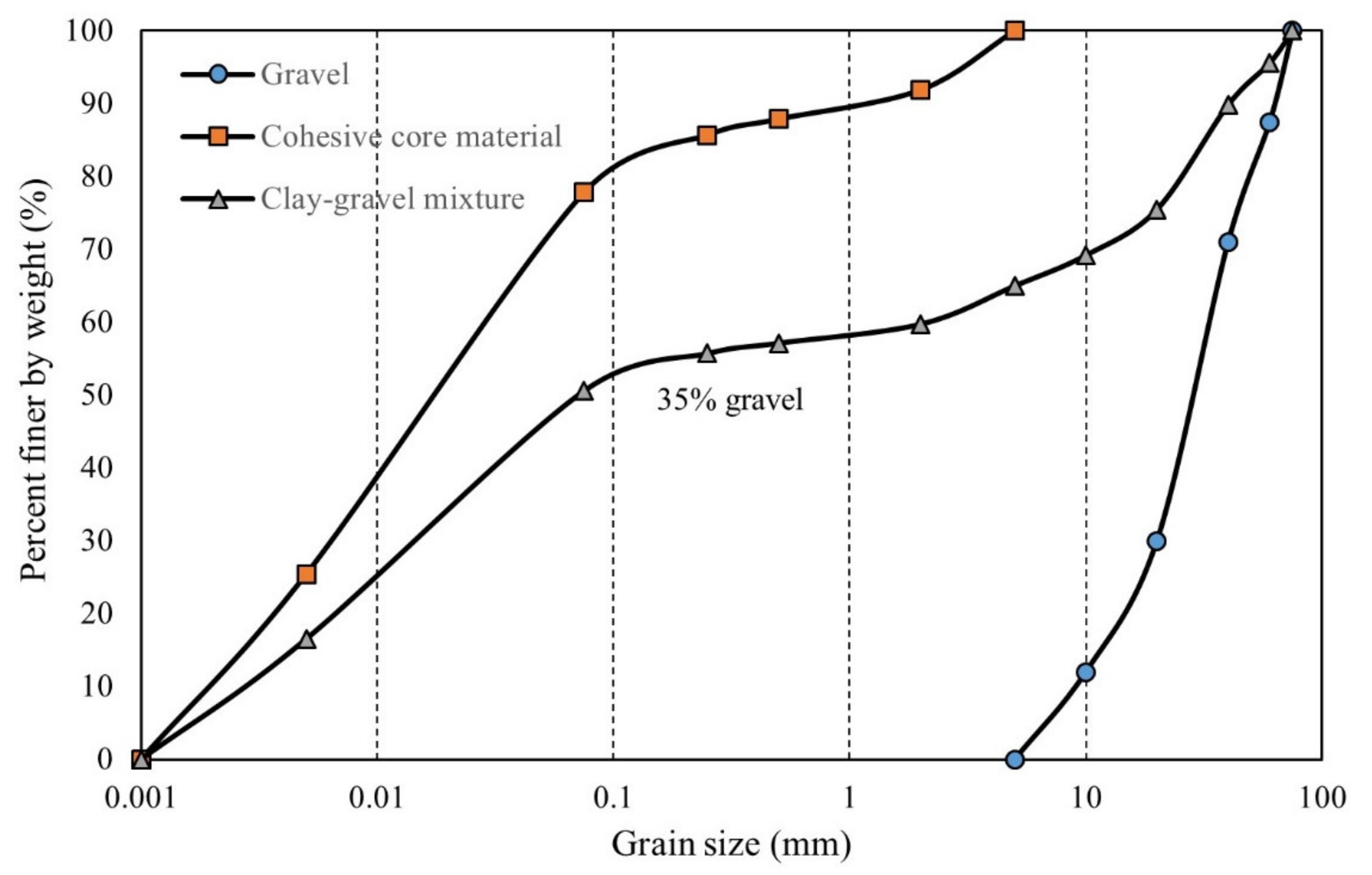
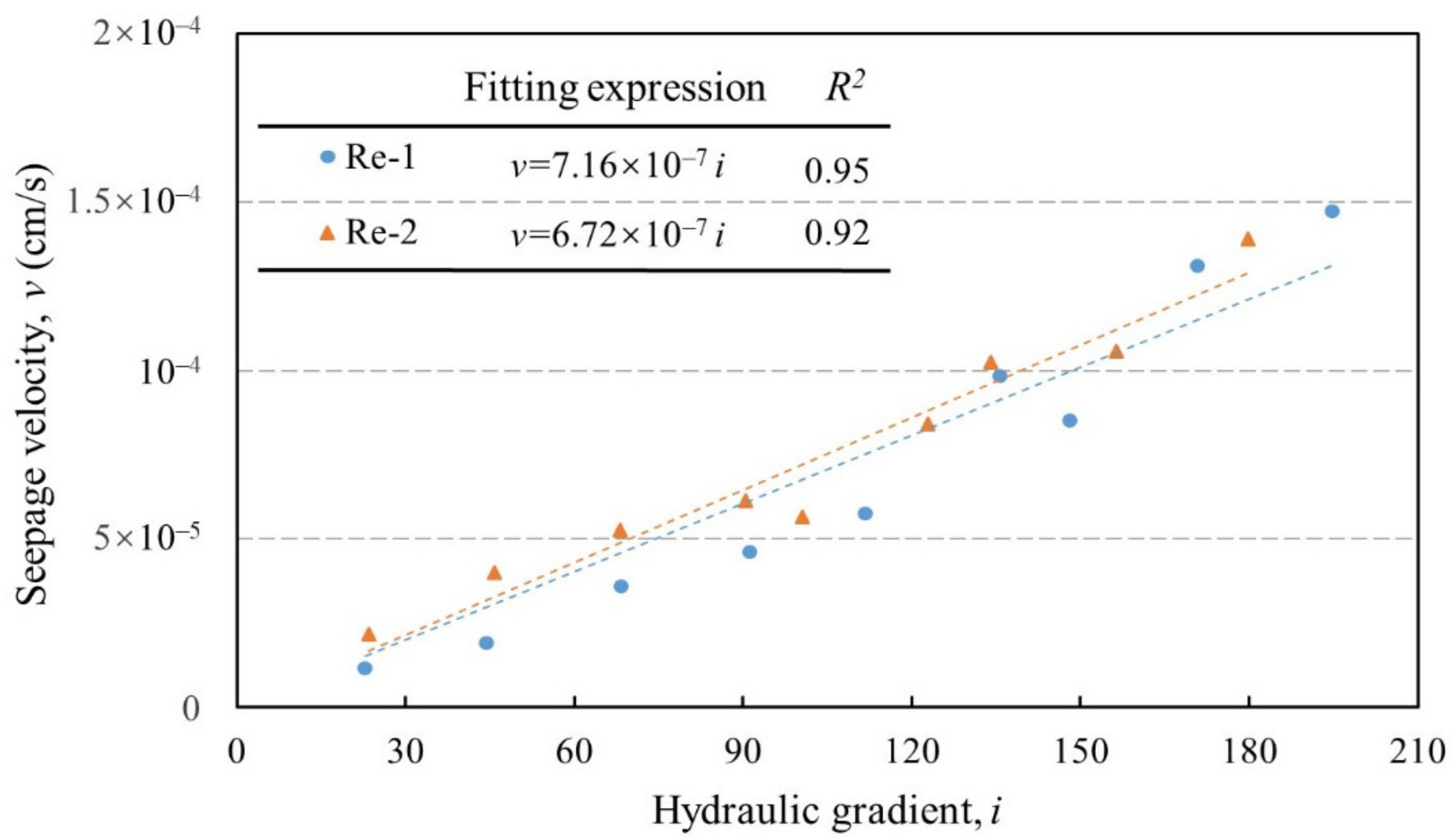


| Index | Parameter |
|---|---|
| External size | 2000 × 3000 × 2000 mm |
| Maximum specimen size | 1050 × 550 × 550 mm |
| Minimum specimen size | 900 × 450 × 450 mm |
| Loading form | Rigid loading |
| Loading direction | 3-way directions |
| Maximum stress level | 9 MPa |
| Maximum water pressure | 3.0 MPa |
| Index | Core Material | Clay–Gravel Mixture (35% Gravel) |
|---|---|---|
| Liquid limit, wL | 35.4% | 27.0% |
| Plasticity limit, wP | 15.8% | 14.1% |
| Plasticity index, IP | 19.6 | 12.9 |
| Specific gravity, Gs | 2.75 | 2.76 |
| Mean particle size, d50 (mm) | 0.019 | 0.074 |
| Coefficient of uniformity, Cu | - | 628.4 |
| Coefficient of curvature, Cc | - | 0.145 |
| Maximum dry density, ρdmax (g/cm3) | 1.78 | 2.06 |
| Optimum moisture content, ωop | 17.9% | 12.4% |
| Test Condition | CG-1 | CG-1sr | CG-2 | CG-2sr |
|---|---|---|---|---|
| σx (MPa) | 2.5 | 3.5 | ||
| σy (MPa) | 2.5 | 2.5 | ||
| σz (MPa) | 2 | 4.5 | ||
| p (MPa) | 2.33 | 3.5 | ||
| SR period (h) | - | 12 | - | 12 |
Publisher’s Note: MDPI stays neutral with regard to jurisdictional claims in published maps and institutional affiliations. |
© 2021 by the authors. Licensee MDPI, Basel, Switzerland. This article is an open access article distributed under the terms and conditions of the Creative Commons Attribution (CC BY) license (https://creativecommons.org/licenses/by/4.0/).
Share and Cite
Chen, C.; Chen, S.; Mei, S.; Han, S.; Zhang, X.; Tang, Y. An Improved Large-Scale Stress-Controlled Apparatus for Long-Term Seepage Study of Coarse-Grained Cohesive Soils. Sensors 2021, 21, 6280. https://doi.org/10.3390/s21186280
Chen C, Chen S, Mei S, Han S, Zhang X, Tang Y. An Improved Large-Scale Stress-Controlled Apparatus for Long-Term Seepage Study of Coarse-Grained Cohesive Soils. Sensors. 2021; 21(18):6280. https://doi.org/10.3390/s21186280
Chicago/Turabian StyleChen, Chenghao, Shengshui Chen, Shiang Mei, Shaoyang Han, Xian Zhang, and Yi Tang. 2021. "An Improved Large-Scale Stress-Controlled Apparatus for Long-Term Seepage Study of Coarse-Grained Cohesive Soils" Sensors 21, no. 18: 6280. https://doi.org/10.3390/s21186280
APA StyleChen, C., Chen, S., Mei, S., Han, S., Zhang, X., & Tang, Y. (2021). An Improved Large-Scale Stress-Controlled Apparatus for Long-Term Seepage Study of Coarse-Grained Cohesive Soils. Sensors, 21(18), 6280. https://doi.org/10.3390/s21186280







